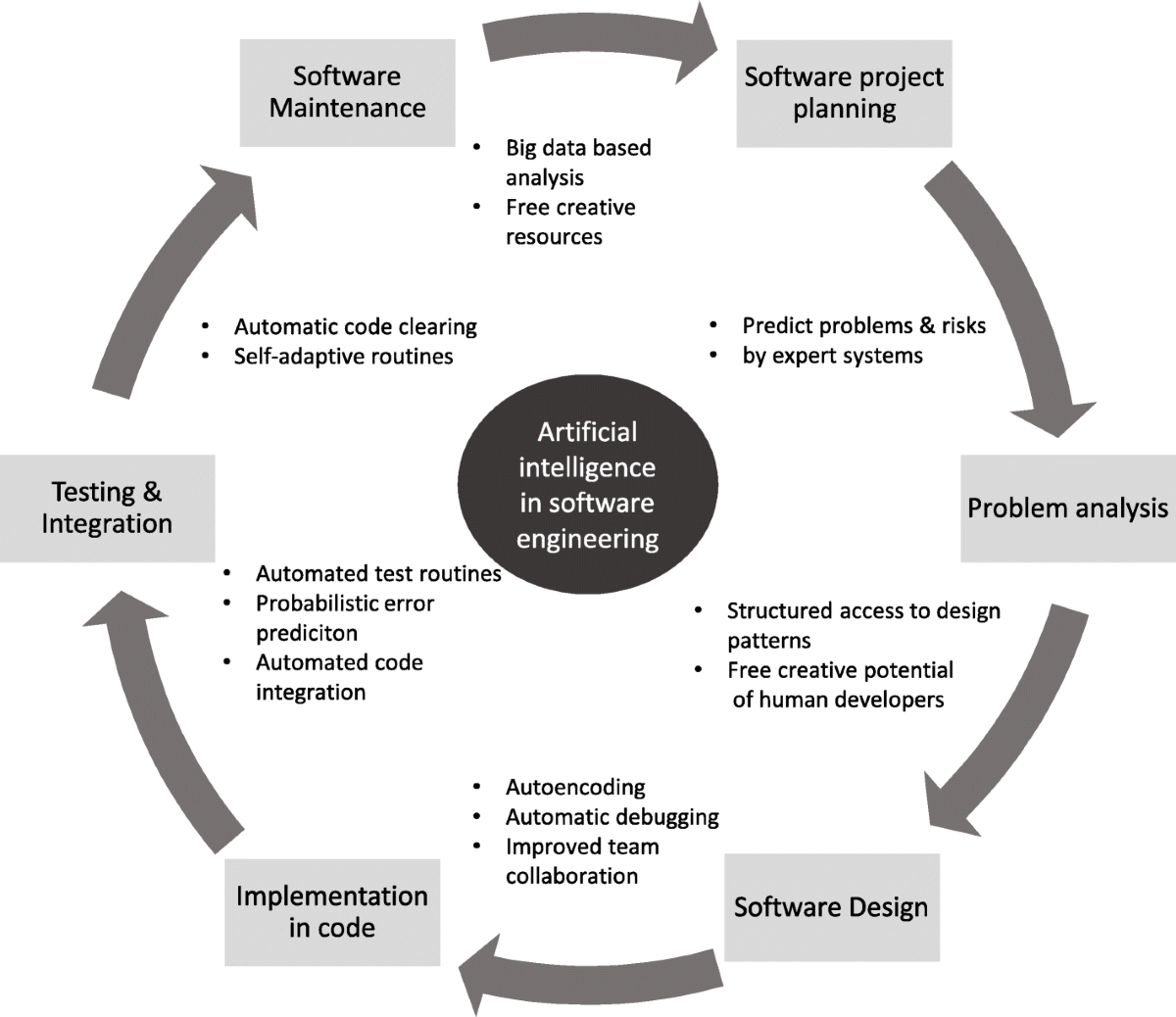All Categories
Featured
Table of Contents
- – The 7-Minute Rule for 7-step Guide To Become A...
- – Getting The How To Become A Machine Learning E...
- – The 8-Minute Rule for Aws Machine Learning En...
- – How To Become A Machine Learning Engineer (20...
- – Some Of Leverage Machine Learning For Softwa...
- – The Ultimate Guide To Practical Deep Learnin...
You most likely recognize Santiago from his Twitter. On Twitter, every day, he shares a great deal of functional things about equipment discovering. Alexey: Before we go right into our primary topic of relocating from software program design to device understanding, possibly we can begin with your history.
I began as a software program designer. I went to college, obtained a computer system scientific research degree, and I started building software application. I think it was 2015 when I chose to opt for a Master's in computer technology. Back after that, I had no idea regarding artificial intelligence. I didn't have any type of interest in it.
I understand you've been utilizing the term "transitioning from software program design to maker discovering". I such as the term "adding to my ability the artificial intelligence abilities" much more because I believe if you're a software designer, you are already supplying a great deal of worth. By integrating artificial intelligence now, you're increasing the impact that you can carry the industry.
Alexey: This comes back to one of your tweets or possibly it was from your program when you compare 2 strategies to discovering. In this case, it was some trouble from Kaggle regarding this Titanic dataset, and you simply find out exactly how to address this problem using a particular device, like choice trees from SciKit Learn.
The 7-Minute Rule for 7-step Guide To Become A Machine Learning Engineer In ...
You initially learn math, or linear algebra, calculus. After that when you know the mathematics, you go to machine learning theory and you discover the concept. Then four years later on, you finally pertain to applications, "Okay, exactly how do I make use of all these four years of math to address this Titanic problem?" ? So in the previous, you kind of conserve on your own a long time, I assume.
If I have an electric outlet here that I require changing, I don't intend to most likely to university, spend four years understanding the math behind electrical power and the physics and all of that, just to transform an electrical outlet. I would certainly instead begin with the outlet and locate a YouTube video clip that helps me go via the trouble.
Poor analogy. Yet you understand, right? (27:22) Santiago: I truly like the idea of starting with an issue, attempting to toss out what I know as much as that trouble and understand why it does not function. Order the tools that I require to resolve that problem and begin excavating deeper and much deeper and much deeper from that point on.
Alexey: Possibly we can chat a bit concerning finding out sources. You stated in Kaggle there is an intro tutorial, where you can obtain and learn exactly how to make choice trees.
The only demand for that training course is that you know a little of Python. If you're a programmer, that's a wonderful base. (38:48) Santiago: If you're not a programmer, then I do have a pin on my Twitter account. If you most likely to my account, the tweet that's mosting likely to be on the top, the one that says "pinned tweet".
Getting The How To Become A Machine Learning Engineer In 2025 To Work

Also if you're not a programmer, you can start with Python and work your means to even more equipment discovering. This roadmap is focused on Coursera, which is a system that I truly, truly like. You can examine all of the programs completely free or you can pay for the Coursera subscription to obtain certifications if you wish to.
Alexey: This comes back to one of your tweets or perhaps it was from your course when you contrast 2 methods to knowing. In this case, it was some problem from Kaggle about this Titanic dataset, and you simply learn just how to address this problem utilizing a certain tool, like choice trees from SciKit Learn.

You first discover math, or straight algebra, calculus. After that when you know the math, you most likely to artificial intelligence concept and you learn the concept. Four years later on, you ultimately come to applications, "Okay, just how do I use all these four years of mathematics to fix this Titanic issue?" Right? In the former, you kind of save on your own some time, I think.
If I have an electric outlet here that I require changing, I don't intend to most likely to college, invest 4 years comprehending the mathematics behind electrical power and the physics and all of that, just to change an electrical outlet. I prefer to begin with the electrical outlet and locate a YouTube video clip that aids me go with the trouble.
Poor analogy. Yet you understand, right? (27:22) Santiago: I actually like the concept of beginning with an issue, attempting to throw away what I know up to that trouble and recognize why it doesn't work. Order the tools that I need to resolve that problem and begin excavating deeper and much deeper and deeper from that point on.
Alexey: Possibly we can speak a bit about finding out sources. You pointed out in Kaggle there is an introduction tutorial, where you can get and learn just how to make choice trees.
The 8-Minute Rule for Aws Machine Learning Engineer Nanodegree
The only requirement for that training course is that you understand a bit of Python. If you're a developer, that's a wonderful base. (38:48) Santiago: If you're not a designer, after that I do have a pin on my Twitter account. If you go to my account, the tweet that's mosting likely to be on the top, the one that says "pinned tweet".
Even if you're not a programmer, you can start with Python and work your method to even more equipment discovering. This roadmap is concentrated on Coursera, which is a system that I truly, really like. You can audit every one of the training courses absolutely free or you can spend for the Coursera registration to obtain certificates if you intend to.
How To Become A Machine Learning Engineer (2025 Guide) for Beginners
That's what I would do. Alexey: This comes back to among your tweets or possibly it was from your program when you contrast two approaches to knowing. One approach is the trouble based method, which you simply chatted about. You find a trouble. In this case, it was some issue from Kaggle regarding this Titanic dataset, and you just discover how to resolve this issue using a specific tool, like decision trees from SciKit Learn.
You first find out math, or direct algebra, calculus. When you recognize the math, you go to equipment learning concept and you discover the concept.
If I have an electric outlet below that I require replacing, I don't wish to go to college, spend 4 years understanding the mathematics behind power and the physics and all of that, simply to transform an electrical outlet. I would certainly instead start with the outlet and locate a YouTube video clip that assists me experience the problem.
Santiago: I actually like the concept of beginning with a problem, trying to toss out what I recognize up to that issue and recognize why it does not work. Get the devices that I need to solve that trouble and begin excavating much deeper and much deeper and deeper from that point on.
Alexey: Perhaps we can speak a little bit about discovering sources. You discussed in Kaggle there is an introduction tutorial, where you can get and discover how to make choice trees.
Some Of Leverage Machine Learning For Software Development - Gap
The only requirement for that training course is that you know a bit of Python. If you're a programmer, that's a wonderful starting point. (38:48) Santiago: If you're not a designer, after that I do have a pin on my Twitter account. If you most likely to my profile, the tweet that's going to get on the top, the one that states "pinned tweet".
Also if you're not a designer, you can start with Python and work your method to even more maker understanding. This roadmap is concentrated on Coursera, which is a system that I actually, truly like. You can investigate all of the courses free of charge or you can spend for the Coursera registration to obtain certifications if you wish to.
Alexey: This comes back to one of your tweets or perhaps it was from your program when you compare two strategies to knowing. In this instance, it was some trouble from Kaggle concerning this Titanic dataset, and you simply learn how to address this trouble making use of a particular device, like choice trees from SciKit Learn.
You first find out mathematics, or straight algebra, calculus. When you recognize the mathematics, you go to device knowing concept and you discover the concept.
The Ultimate Guide To Practical Deep Learning For Coders - Fast.ai
If I have an electric outlet below that I require changing, I don't wish to go to college, invest four years recognizing the math behind electricity and the physics and all of that, just to transform an electrical outlet. I would instead start with the outlet and discover a YouTube video that aids me go via the problem.
Bad analogy. You get the idea? (27:22) Santiago: I really like the idea of beginning with a problem, trying to throw away what I recognize up to that issue and recognize why it does not work. Get hold of the tools that I need to address that trouble and start digging much deeper and deeper and much deeper from that factor on.

So that's what I normally advise. Alexey: Perhaps we can chat a bit concerning discovering sources. You pointed out in Kaggle there is an intro tutorial, where you can get and learn just how to make decision trees. At the start, before we started this interview, you pointed out a pair of books as well.
The only demand for that course is that you recognize a bit of Python. If you're a programmer, that's a wonderful base. (38:48) Santiago: If you're not a programmer, after that I do have a pin on my Twitter account. If you go to my profile, the tweet that's mosting likely to be on the top, the one that states "pinned tweet".
Even if you're not a developer, you can start with Python and work your method to more machine discovering. This roadmap is focused on Coursera, which is a system that I truly, truly like. You can examine all of the training courses completely free or you can pay for the Coursera subscription to get certificates if you wish to.
Table of Contents
- – The 7-Minute Rule for 7-step Guide To Become A...
- – Getting The How To Become A Machine Learning E...
- – The 8-Minute Rule for Aws Machine Learning En...
- – How To Become A Machine Learning Engineer (20...
- – Some Of Leverage Machine Learning For Softwa...
- – The Ultimate Guide To Practical Deep Learnin...
Latest Posts
The Best Free Websites To Learn Data Structures & Algorithms
Statistics & Probability Questions For Data Science Interviews
How To Answer Algorithm Questions In Software Engineering Interviews
More
Latest Posts
The Best Free Websites To Learn Data Structures & Algorithms
Statistics & Probability Questions For Data Science Interviews
How To Answer Algorithm Questions In Software Engineering Interviews